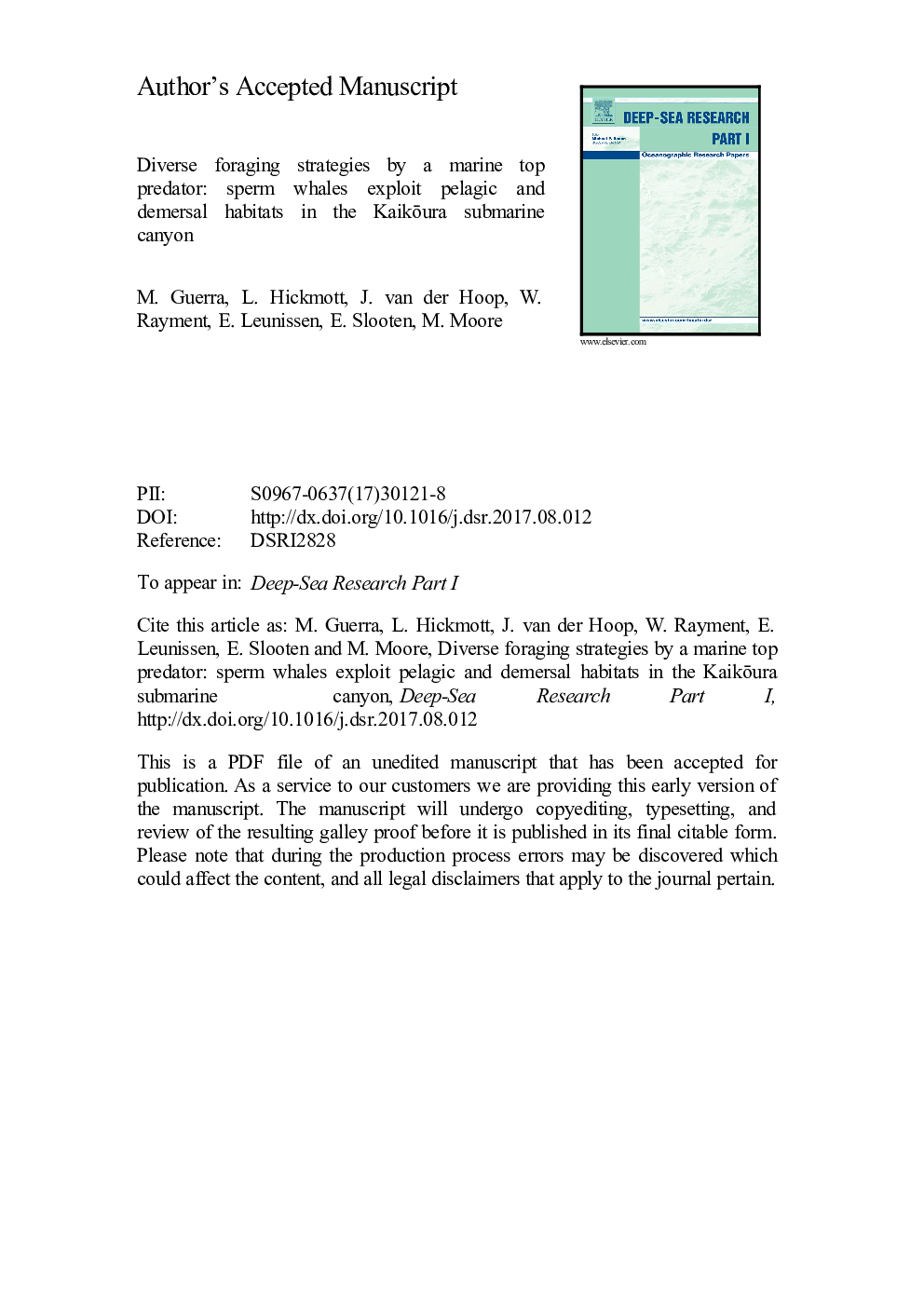| Article ID | Journal | Published Year | Pages | File Type |
|---|---|---|---|---|
| 5764610 | Deep Sea Research Part I: Oceanographic Research Papers | 2017 | 24 Pages |
Abstract
The submarine canyon off KaikÅura (New Zealand) is an extremely productive deep-sea habitat, and an important foraging ground for male sperm whales (Physeter macrocephalus). We used high-resolution archival tags to study the diving behaviour of sperm whales, and used the echoes from their echolocation sounds to estimate their distance from the seafloor. Diving depths and distance above the seafloor were obtained for 28 dives from six individuals. Whales foraged at depths between 284 and 1433Â m, targeting mesopelagic and demersal prey layers. The majority of foraging buzzes occurred within one of three vertical strata: within 50Â m of the seafloor, mid-water at depths of 700-900Â m, and mid-water at depths of 400-600Â m. Sperm whales sampled during this study performed more demersal foraging than that reported in any previous studies - including at KaikÅura in further inshore waters. This suggests that the extreme benthic productivity of the KaikÅura Canyon is reflected in the trophic preferences of these massive top predators. We found some evidence for circadian patterns in the foraging behaviour of sperm whales, which might be related to vertical movements of their prey following the deep scattering layer. We explored the ecological implications of the whales' foraging preferences on their habitat use, highlighting the need for further research on how submarine canyons facilitate top predator hotspots.
Related Topics
Physical Sciences and Engineering
Earth and Planetary Sciences
Geology
Authors
M. Guerra, L. Hickmott, J. van der Hoop, W. Rayment, E. Leunissen, E. Slooten, M. Moore,
